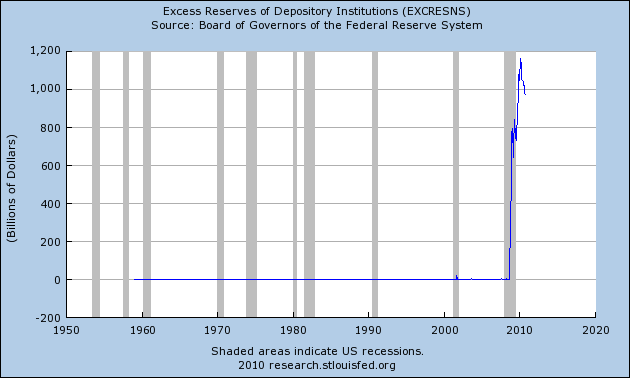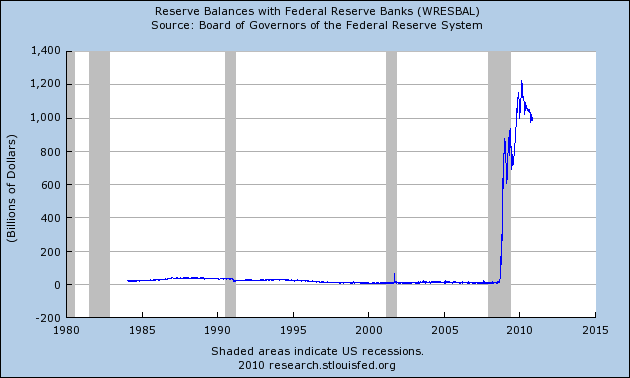Results 1 to 1 of 1
Thread Information
Users Browsing this Thread
There are currently 1 users browsing this thread. (0 members and 1 guests)
-
11-21-2010, 06:21 PM #1Senior Member


- Join Date
- May 2007
- Location
- South West Florida (Behind friendly lines but still in Occupied Territory)
- Posts
- 117,696
Fed's Driving U.S. Into a Second Great Depression
Fed's Hidden Agenda of Driving U.S. Into a Second Great Depression
Economics / Great Depression II
Nov 21, 2010 - 06:46 AM
By: Washingtons_Blog
Ben Bernanke has said that the Fed is trying to promote inflation, increase lending, reduce unemployment, and stimulate the economy. However, the Fed has arguably - to some extent - been working against all of these goals.
For example, as I reported in March, the Fed has been paying the big banks high enough interest on the funds which they deposit at the Fed to discourage banks from making loans. Indeed, the Fed has explicitly stated that - in order to prevent inflation - it wants to ensure that the banks don't loan out money into the economy, but instead deposit it at the Fed:
Why is M1 crashing? [the M1 money multiplier basically measures how much the money supply increases for each $1 increase in the monetary base, and it gives an indication of the "velocity" of money, i.e. how quickly money is circulating through the system]
Because the banks continue to build up their excess reserves, instead of lending out money:

These excess reserves, of course, are deposited at the Fed:

Why are banks building up their excess reserves?
As the Fed notes: http://www.federalreserve.gov/monetaryp ... lances.htm
The Federal Reserve Banks pay interest on required reserve balances--balances held at Reserve Banks to satisfy reserve requirements--and on excess balances--balances held in excess of required reserve balances and contractual clearing balances.
The New York Fed itself said in a July 2009 staff report that the excess reserves are almost entirely due to Fed policy: http://www.newyorkfed.org/research/staf ... /sr380.pdf
Since September 2008, the quantity of reserves in the U.S. banking system has grown dramatically, as shown in Figure 1.1 Prior to the onset of the financial crisis, required reserves were about $40 billion and excess reserves were roughly $1.5 billion. Excess reserves spiked to around $9 billion in August 2007, but then quickly returned to pre-crisis levels and remained there until the middle of September 2008. Following the collapse of Lehman Brothers, however, total reserves began to grow rapidly, climbing above $900 billion by January 2009. As the figure shows, almost all of the increase was in excess reserves. While required reserves rose from $44 billion to $60 billion over this period, this change was dwarfed by the large and unprecedented rise in excess reserves.
Why are banks holding so many excess reserves? What do the data in Figure 1 tell us about current economic conditions and about bank lending behavior? Some observers claim that the large increase in excess reserves implies that many of the policies introduced by the Federal Reserve in response to the financial crisis have been ineffective. Rather than promoting the flow of credit to firms and households, it is argued, the data shown in Figure 1 indicate that the money lent to banks and other intermediaries by the Federal Reserve since September 2008 is simply sitting idle in banksâ reserve accounts. Edlin and Jaffee (2009), for example, identify the high level of excess reserves as either the âproblemâJoin our efforts to Secure America's Borders and End Illegal Immigration by Joining ALIPAC's E-Mail Alerts network (CLICK HERE)


 LinkBack URL
LinkBack URL About LinkBacks
About LinkBacks




 Reply With Quote
Reply With Quote

72 Hours Till Deadline: Durbin moves on Amnesty
04-28-2024, 02:18 PM in illegal immigration Announcements